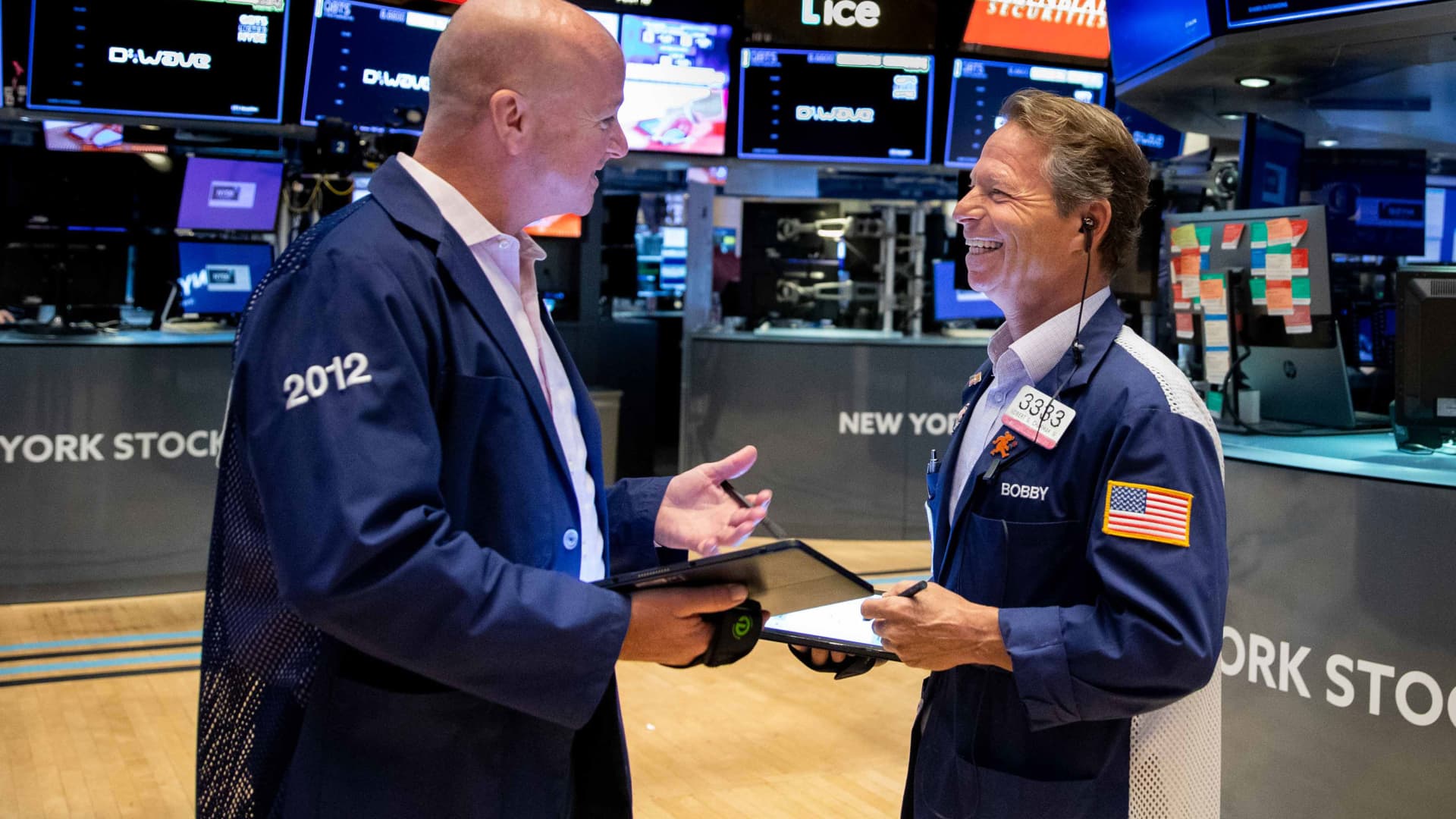Traders on the floor of the NYSE, Aug. 8, 2022.
Source: Reuters
A key measure of stock volatility is providing clues that investors should be wary of the recent market rally, according to Data Trek Research co-founder Nicholas Colas.
The CBOE Volatility Index has come off its most recent mid-June highs and now is trading around its long-term average of 20.
At the same time, the S&P 500’s top five sectors by market cap have been moving largely in lockstep up and down with the index.
Taking together, the movements are contrary to the way typical market rallies have played out over the past several years and provide warning signs that the rally, which has taken the index up about 15% off its mid-June lows, is suspect.
“Lined up against prior times the VIX was at similar levels, the correlation number should be lower. But here we are, nonetheless,” Colas said in his daily newsletter to clients Wednesday evening. “The VIX close at 20 [Wednesday] is promising something stocks have not yet actually delivered, namely a healthy decoupling of sector price action from the overall market.”
When looking at the 30-day daily returns over the past four years of tech, communication services, consumer discretionary, financials and health care, the sectors run in tandem with the S&P 500’s moves 69% of the time, according to Colas.
In a large portion of those times, high correlations coincided with down markets and vice versa. Thus, the current conditions — the 30-day trailing average of correlations running around 84%, a low VIX and a big rebound in stocks – haven’t followed typical market patterns.
The market has rebounded sharply off those mid-June lows as investors have grown more comfortable with corporate earnings and hopeful that the Fed won’t have to institute draconian rate increases to control inflation.
But Colas said investors should be wary. A market that has grown complacent about the multiple challenges facing corporate America, including slow growth, high inflation and tighter policy, could be susceptible to a hit.
“We have had a standing recommendation all year to consider buying stocks when the VIX gets around 36 (2 standard deviations from the mean) and lighten up when it gets close to 20,” Colas wrote. “We are at the latter point now. As much as we remain bullish, stocks look overextended here.”




















Discussion about this post